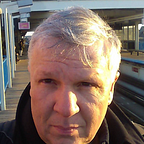International Socialism is My North Star:
Towards a History of the International Socialist Organization (ISO), Part 1.
by Joe Allen
(The views expressed here are my own)
During the last few weeks I’ve seen several discussions about the history of the International Socialist Organization (ISO) on Facebook, which I was a member of for nearly four decades. The picture presented of the ISO by several people is one that I don’t recognize at all.
Some of these discussions appear to me to be largely ignorant of the ISO’s history motivated by malice rather than any serious attempt to understand its four decade history. I’m not one to run away from my political history nor to not critically examine the ISO history and work.
The ISO did much honorable work through the decades and I hope that work will provide some guide to the building of the next revolutionary left in the United States. In previous articles, I cited the ISO’s work and are available here and here.
I became a socialist in high school in the 1970s and went to college looking to answer a lot of the political questions that were on my mind. Hopefully, younger comrades can get some sense of that era in politics, and how the ISO attempted to put forward our distinctive brand of socialist politics in increasingly difficult political times.
Boston in the late 1970s
First, a few things about Boston in the late 1970s. I started classes at UMass-Boston in the fall semester of 1978. I graduated from Stoughton High School a few months earlier. Boston’s politics, social setting, and culture was still defined by the racist backlash against public school desegregation that began in 1974.
Boston’s Black community had campaigned since the Brown decision to desegregate the public school system, one of the most racist and segregated in the United States, but was delayed for two decades in most northern cities by the racists who controlled the local school boards. Jonathan Kozol’s best-selling book Death at an Early Age brought to a wider world the miserable state of Boston public schools for Black children.
After the Federal Courts ordered the schools to implement a desegregation plan for the fall of 1974, the white working class neighborhoods rose in violent opposition. Boston became internationally notorious for its violent bigotry and parochialism. The most enduring image of that time was African-American lawyer Ted Landsmark was attacked by Joseph Rakes with a flag pole bearing an American flag. Rakes appeared to be trying to impale Landsmark.
The assault on Landsmark took place in 1976 during the Bicentennial Celebrations marking the 200th anniversary of the founding of the United States. The sharp contrast between Boston’s leading role in the American Revolution in 1176 and its abysmal bigotry in 1976 led to a lot of lazy, useless commentary.
Only one wholly ignorant of Boston’s past, which most news and political commentators were, could be “shocked.” Boston, after all, was a bastion of support for fascist “radio priest” Father Coughlin in the 1930s and anti-communist witch-hunter Joe McCarthy in the 1950s.So the violent opposition to civil rights shouldn’t have come as a surprise.
The opposition to desegregation was led by street level demagogues like Louise Day Hick, Pixie Palladino, John Kerrigan, and Jimmy Kelly, and ‘respectable’ bigots like South Boston’s Billy Bulger and Ray Flynn. Michael MacDonald’s book All Souls gives an insider account of growing up in South Boston in those days.
By the fall of 1978, though desegregation did formally triumph, the white middle class and working class, for the most part, deserted the Boston public school system for the suburbs or Catholic schools. Eventually, the Boston Public schools became overwhelmingly Black, Latino, and working class.
Boston was still a tense city by the time I arrived, where explosions of white and police violence were common. Outsiders like me were greeted with suspicion by white residents. I had to learn to navigate through the city that and harrowing experiences at times. I remember the first time I took the trolley from Mattapan to Ashmont station, I got off the trolley and what loomed over me? A giant green Shamrock with the menacing words “Irish Power” emblazoned underneath it. Not good.
The shamrock, a rather benign symbol of Irish heritage, was transformed into a hate symbol. The white cops who enforced school desegregation commonly put shamrocks on their side arms to show their loyalty. That’s the city I went to college in and first met the ISO.
